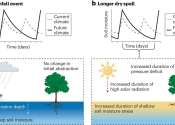In agriculture, crop yield (also known as "agricultural output") is not only a measure of the yield of cereal per unit area of land under cultivation, it is also the seed generation of the plant itself, i.e. one grain of wheat produces a stalk yielding three grain, or 1:3. The figure, 1:3 is considered by agronomists as the minimum required to substain human life: one of the three seeds must be set aside for the next planting season, the remaining two either consumed by the grower, or one for human consumption and the other for livestock feed.
Historically speaking, a major increase in crop yield took place in the early eighteenth century with the end of the ancient, wasteful cycle of the three course system of crop rotation whereby a third of the land laid fallow every year -- and hence taken out of human food, and animal feed, production. It was to be replaced by the four-course system of crop rotation, devised in England in 1730 by Viscount Charles Townshend or "Turnip" Townshend during the British Agricultural Revolution as he was called by his early, but quickly converted, detractors. Both simple and obvious in hindsight, the new procedure was nothing short of revolutionary. In the first year wheat or oats were planted; in the second year barley or oats; in the third year clover, rye, rutabaga and/or kale was planted; in the fourth year turnips were planted but not harvested. Instead, sheep were driven on to the turnip fields to eat the crop, trample the leavings under their feet into the soil, and by doing all this, the sheep also fertilized the land with their droppings. In the fifth year (or first year of the new rotation), the cycle began once more with a planting of wheat or oats, in an average, a thirty percent increased yield.







